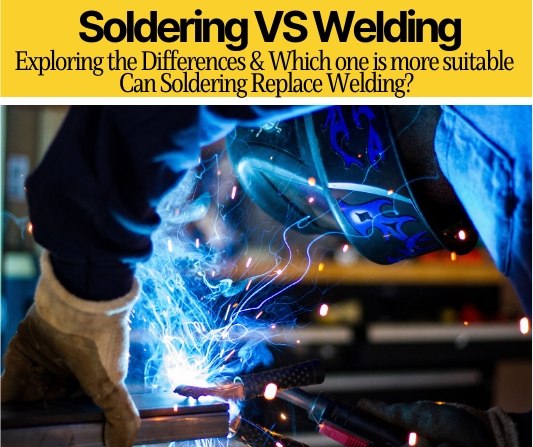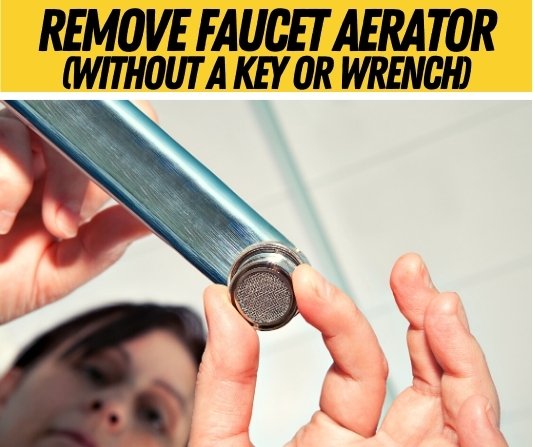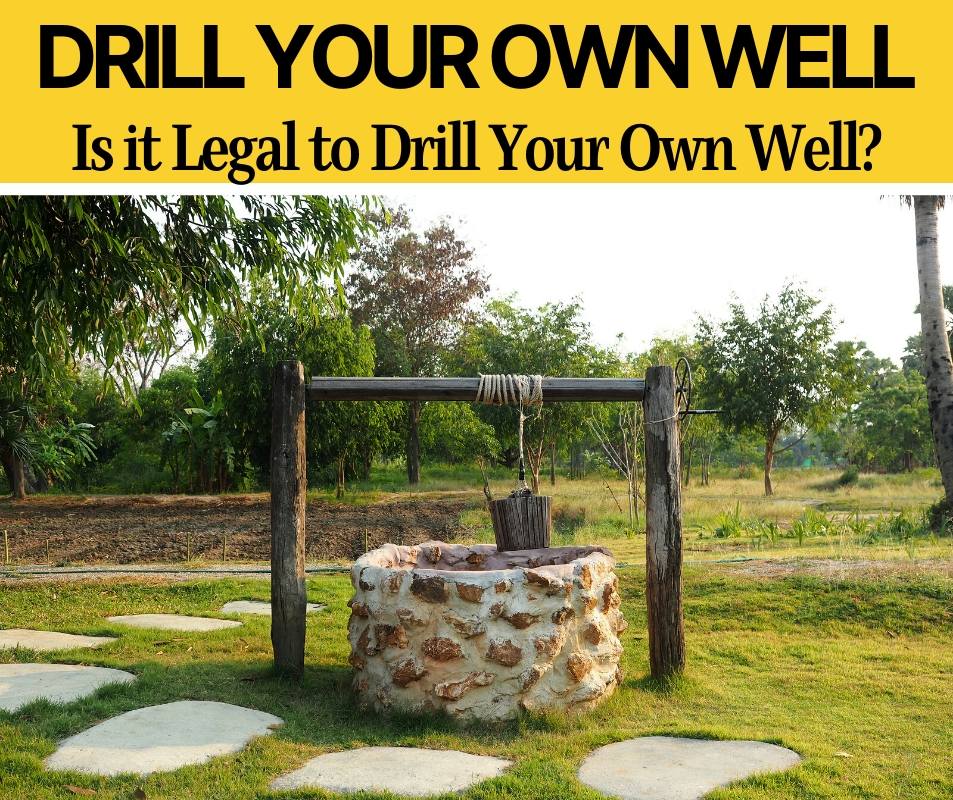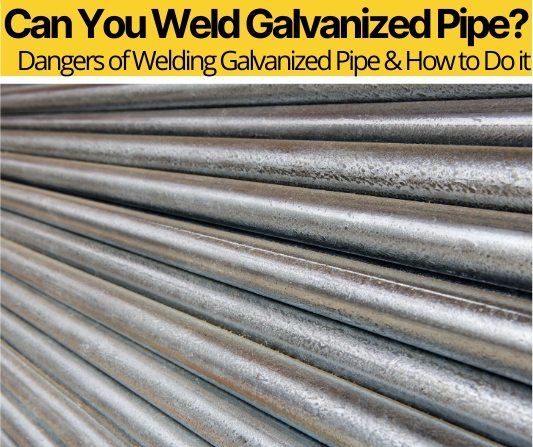 As soon as you start to tamper with galvanized Steel Pipes they can become dangerous. Galvanized steel pipe has been used commercially and domestically for its long-lasting and protective qualities.
As soon as you start to tamper with galvanized Steel Pipes they can become dangerous. Galvanized steel pipe has been used commercially and domestically for its long-lasting and protective qualities.
Because of its widespread use, many end up having to do DIY work to it. But as soon as you start to tamper with this stuff it rightfully picks up a name for itself. Deservedly so, because the zinc from the coating releases toxic chemicals that are relatively lung burning.
So before you go ahead and give yourself an unnecessary injury with that DIY alternation, let’s go over all you need to know about welding galvanized pipe.
Can you weld galvanized pipe?
Technically, yes, you can weld galvanized pipe. But before you do, it is highly recommended that you take a number of safety precautions before you attempt this feat. After all, you really want to avoid galvanized poisoning – no-one wants to be struck down by that.
Used as a product to build infrastructures and prevent them from erosion and rust, Galvanized steel piping can be used in anything from house guttering to the Brooklyn bridge. But, and this is a big but, as soon as you heat up galvanized steel piping, you release a toxic zinc by-product from the protective coating on the metal. This zinc oxide can be a real poison and is best avoided through proper preparation and protective equipment when undertaking the welding of galvanized pipe. Past that, the normal welding technique applies really.
To make sure you are prepared and to prevent you from any unwanted health scares, this article will go over all you need to know. We’ll take a look at how to weld the pipe, the best ways to do this (whether that be Mig, Stick, wire or flux), the dangers and hazards, and see what you can weld galvanized steel to.
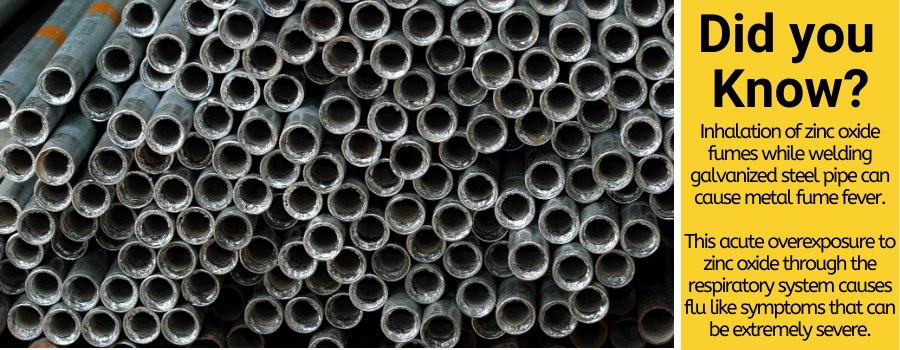
How to weld galvanized steel pipe?
Because it is a fairly dangerous task to undertake you really need to be taking some safety precautions. I know in this day and age, there’s a lot of nonsense about health and safety going around, but when it comes to this, seriously, believe me, this stuff is toxic. Zinc oxide can give people ‘metal fume fever’ which is a flu-like cause of this toxin. Indeed, overexposure to this can result in death. So much so, some welders have been known to drink milk or take calcium supplements before welding galvanized steel to combat the effects of the zinc.
Before you get started acquiring the correct protective equipment would be your best bet. You’re going to need 4 main pieces of kit. A heavy-duty apron, gloves, a good welding mask, and a reliable welding respirator. In addition to this, you should get a well-ventilated workstation through a fume extractor or multiple fans to extract the excess fumes placed at about 2-3m away (or even better, set up your workbench outside). Finally, to make matters easier many suggest removing as much of the protective zinc coating from the steel before you begin to weld – this can be done through sanding the appropriate area before you tackle it with the welder. In fact, once you have removed the zinc coating on the areas you want to weld, the procedure is the same as welding normal steel. Ground yourself and get to work!
Best ways to weld galvanized pipe
So, you’ve sorted yourself out with all the appropriate protective equipment and know the task you have at hand. But now you want to know what is the best way to weld your section of galvanized pipe. Galvanized piping can be a tad tougher to weld due to the related fusion if you do not remove all of that coating. This can cause inclusions and porosity. Despite this, Gas Metal Arc (‘MIG’) welding is the best bet for welding pipes. More versatile and consistent than other methods, this way creates high-quality welds fast. But that is not to say the other three mainstream welding techniques don’t work – we will cover a few options below.
Also Read: Soldering VS Welding
Can you MIG weld galvanized pipe?
Gas Metal Arc Welding (GMAW or better known as MIG) is the most popular type of industrial welding technique. It uses a gun fueled by gas along the wire electrode which heats up the two bits of metal being worked. It requires a constant voltage and power, which means it could be hard to use outside if you had planned on welding the galvanized steel outside. Using MIG whilst welding galvanized pipe is going to produce a high travel speed and high production rate.
This is why MIG is an excellent choice here as it provides the adequate stability and control to produce a good finish. You want to use a shorter circuit transfer to produce more power in your weld, so you should be looking at a 200 amp, 100% duty cycle, ‘inductance’ control power source. Your welding gun is going to be optimal at 300 amps and the best option for your wire is going to ER70S-2/ER70S-3. You want to avoid using any wire which has high silicon content such as an ES70S-6 as the silicon will crack when mixed with the surrounding zinc. To avoid splatter, the welder should hold the wire stickout constantly during the job. Apart from that, this is a fairly normal welding job and shouldn’t cause too much grief. For a more in-depth look into MIG and how to use it well, Weld Reality offers some top training advice.
Can you Stick weld galvanized pipe?
For the more old school welders amongst you, you may be more used to the Stick technique. Shield Metal Arc Welding (SMAW, Arc or more commonly known as Stick welding) is a type of welding that uses a ‘stick’ with an electric current that uses an arc between the stick and the objects being welded. Used commonly in construction, the stick welding technique has gradually been replaced by MIG. However, it still holds its place. It works by creating a high heat and melting the electrode and metal, creating the weld. Stick arc welding is best used on heavy metal and so can be used just as effectively as MIG on galvanized steel.
Due to its lower power needs, this method could be used outside and offers a distinct advantage over MIG in this regard provided the dangers surrounding the zinc oxide by-product. For this project you want to use a 3/32 inch diameter E6013, utilizing a direct current and electrode positive settings. For thicker pieces of metal, you should move up to an E6010 so you can easily penetrate the thicker metal. When using a stick welder it’s important to remember a couple of extra tips to make up for the lack of versatility and moveability. Wider gaps are needed for butt joints to give complete penetration. A slight whipping action is useful to implement as it will move the electrode forward and back and encourage any zinc to volatilize. Finally to combat the lack of control you automatically get with Stick compared with MIG, using short arc lengths provides more stability to make an accurate and nice weld. Welding tips and tricks is your go to for tips on stick welding.
Can you Tig weld galvanized pipe?
Gas Tungsten Arc Gas Welding (GTAW or TIG as it is more commonly known) is a process of welding that draws upon the use of gas shielding alongside an arc welding process that uses a consumable tungsten electrode to create the desired effect. Due to its complexity and time-consuming nature, it takes a highly-skilled/professional welder to use this technique. It does produce high-quality and splatter free welds, but tends to be used in commercial welding such as on airplanes, cars or motorbikes. Because it is so complicated and skill based, it would be recommended to not bother using this technique when DIY-ing galvanized steel. However, that is not to say that it would not be effective.
Can you Flux Core weld galvanized steel?
Developed as an alternative to shield welding, Flux Core Arc Welding (FCAW or more commonly known as flux core welding) uses a process of welding which draws on a semi-automatic arc weld. Similar to Stick welding in its practical use, this technique uses tubular wire-filled flux. It can be used by self-shielding or dual shielding with gas. Flux core certainly rivals MIG in its use on galvanized steel. Its tolerance of contaminants (rust etc), its ‘out of position’ malleable nature means outside or inside welding is available and good penetration proves the flux core to be a great contender in galvanized pipe welding.
Once the zinc coating is removed, the process is the same as normal. Select your volts (dropping it slightly to avoid unnecessary splatter) and amps according to the thickness of the metal, remember to change up the polarity of your welder from positive MIG to negative flux core. This calculator can help you with regard to what settings would be best implemented on your specific bit of metal. Use a pull technique when welding with a flux core rather than push so the zinc and slag can flow in the correct direction. Whilst using this technique you may need to stop and clean the gun as contaminants build up and clog the weld. Generally, this technique is certainly a big contender for usefulness to MIG in welding galvanized pipe.
Can you weld galvanized pipe fittings?
As mentioned previously, once you have removed the coating from galvanized steel, the weld becomes like a normal steel welding job. This means that the mechanical process of welding is much the same between galvanized steel pipe and non-galvanized steel pipe. By removing the area which is being welded of any zinc, you can use both MIG or Stick electrode welding techniques to perform your desired outcome.
Dangers and hazards of welding galvanized pipe
Asides from the standard dangers associated with welding, the main danger you are going to face is the zinc oxide that burns off the galvanized piping. A by-product of the protective coating on the steel, zinc oxide is harmful to humans. It produces a yellowy/green cloud of gas when burned at high welding temperatures and has been known to cause ill-health in welders who aren’t properly equipped. This tends to come in the form of metal fume fever which produces flu-like symptoms. Prolonged exposure to these fumes can cause serious health issues. Because of this, it is always recommended to dawn some extra protective clothing and an efficient welding respirator, on top of your normal welding clobber.
Is it poisonous to weld galvanized pipe?
When welding the pipe, it produces a poisonous substance but provided you take the correct precautions you should not need to worry too much about the long lasting impact of welding galvanized steel.
Related Questions.
Can galvanized steel be welded to regular steel?
As mentioned previously, it absolutely can be. Much like welding fittings to galvanized steel, regular steel can be welded to galvanized steel easily enough. It does just require the extra stage of removing that harmful zinc coating. However, once that is removed from the pipe you’re onto a winner. Normal welding practice can resume and you can use any welding technique you like. Whatever suits you best, but it would be best to use MIG or Flux Core welding for the best results.
Does JB weld work on galvanized pipe?
Yes, it will work indeed. Despite not providing as strong a repair or, most probably, as long-lasting a repair, JB weld should work on galvanized steel. However, you must remember to sand clean and degrease any of the areas you are working on to allow for the most successful chance at adhesion.

